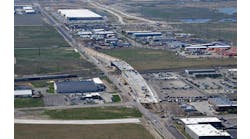By David Lierberman
By most accounts, the election in November 2022 was a surprise. In the months leading up to it, political pundits on both sides of the aisle were telling us about an impending “red wave” that would put republicans squarely back in charge in the halls of Congress.
That happened… sort of. Republicans did indeed take back control of the House of Representatives, but the Senate will remain under the leadership of Sen. Chuck Schumer (D-NY) and the democrats for at least another two years. But, as they say in Washington, “a gavel is a gavel,” and new control of the House means that President Joe Biden will have to contend with a divided government for the first time and, likely, a new set of priorities coming from Congress. As we begin the 118th Congress and as the Biden Administration starts its third year, let’s look at some legislative and regulatory initiatives that will be important in 2023.
One of Congress’s most basic jobs is to fund the government. Although this process can be contentious, one of the last acts of the 117th Congress was to pass an “omnibus” appropriations bill that would keep the federal government operating through September 2023, the end of the fiscal year. As we approach this September deadline, especially with a divided government and a presidential election on the horizon, be on the lookout for this process to get combative.
During election season, republicans made their priorities clear through their “Commitment to America” – a roadmap of critical legislative priorities should they take back the House or the Senate. Top of the agenda for a Republican House might be streamlining domestic energy production, reinvigorating our manufacturing base, and strengthening supply chain resiliency, focusing on moving away from reliance on China. Permitting reform and changing how environmental reviews are completed on federally funded infrastructure projects are also very important to the incoming House majority.[1]
There will also be a host of must-pass initiatives that Congress must do to reauthorize agencies such as the Federal Aviation Administration, food and agricultural policies included in the Farm Bill, and our country’s preparedness and capability in responding to pandemics via the Pandemic and All-Hazards Preparedness Act. Unfortunately, tight majorities in both the House and the Senate mean that there is not much leeway to pass these big, essential bills.
In Washington, a divided government means more regulation from the executive branch simply because it is theoretically harder to pass legislation in Congress. As a result, the following two years will almost assuredly see more executive action on climate, particularly through the U.S. Environmental Protection Agency’s authority to regulate greenhouse gas emissions from roads, vehicles, power plants, and oil wells.
The U.S. Department of Transportation (DOT) will continue its implementation of the Infrastructure Investment & Jobs Act (IIJA) and its own rules, such as the one requiring states to come up with performance measurements of greenhouse gas emissions. The Federal Highways Administration (FHWA), part of the DOT, may also instate national Highway Bridge and Tunnel Safety Management Directives. This rulemaking would provide the authority for FHWA to issue directives to highway bridge and tunnel owners when FHWA determines that an unsafe condition exists or the hazardous condition is likely to exist or develop in other highway bridges or tunnels of the same type or design. Other significant rulemakings coming from the DOT might include the National Electric Vehicle Infrastructure (NEVI) Formula Program, which would establish minimum standards and requirements for implementing the NEVI program, as required by the IIJA.
Further implementation of IIJA and the Inflation Reduction Act will also be crucial as the Biden Administration seeks to get “shovel-ready” projects underway and fund the beginning of clean energy projects nationwide.
2023 is setting up to be a jam-packed year – from the sitting of the 118th Congress to the implementation of essential regulations, and let’s not forget the ramping up to the 2024 presidential election. R&B
[1] The 117th Congress debated permitting reform, and for a while, it looked like it would become a reality. But, unfortunately, it did not, and it failed to be included in an end-of-the-year legislative package. You can read more about this initiative here. Clean Infrastructure Investment | Roads and Bridges (roadsbridges.com)



